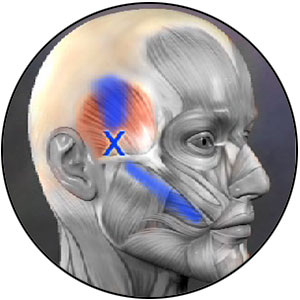
Welcome to Orthopedic Massage. Along with all the lessons listed below (over 4 hours of video footage), this class also includes access to our 3d anatomy viewer which allows you to rotate the body and view 120 muscles and 100 bones with detailed info on each.
Lessons
Introduction
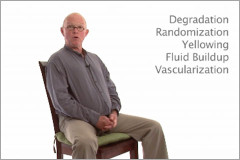
This lesson introduces the basis of Orthopedic massage. John discusses his experience, and the techniques used in this class, including deep transverse friction, ischemic compression, CRAC stretching. He then discusses contraindications to the work.
Anatomy Viewer for Orthopedic Massage

As part of this course, you have access to our 3d anatomy viewer. Click a label to view a muscle. Click anywhere else to rotate the model. Click/hold and drag right or left to control rotation. There are 5 stops where the labels are clickable. The bottom right graphic shows you where you are. Search […]
General Back Pain
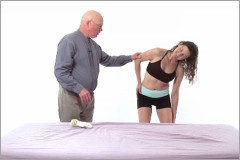
This lesson demonstrates orthopedic massage work on the quadratus lumborum, gluteus medius, gluteus minimus, and serratus posterior inferior.
Vertical back pain
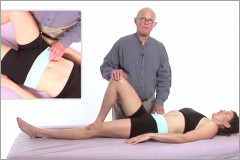
This lesson demonstrates how to work on the psoas, iliacus, and ilio-psoas attachment.
Rectus abdominis, iliolumbar ligament, paraspinals

This lesson demonstrates how to work on the rectus abdominis, the iliolumbar ligament and the paraspinals.
Hips- piriformis muscle syndrome

This lesson demonstrates how the piriformis muscle relates to sciatic pain. John shows how to evaluate the muscle for length, and if short, how to release it.
Hamstrings
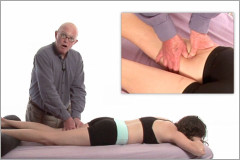
This lesson shows a functional assessment of the hamstring muscles. Then John demonstrates how to work the muscle belly, and the tendinous attachment at the ischial tuberosity (in side posture).
Adductor longus
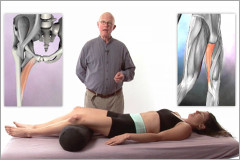
This lesson shows how to evaluate for riders strain which involves the adductor longus and occasionally the gracilis. The strain happens at the musculo-tendonous junction. John demonstrates how to use cross fiber friction to offer relief.
Rectus femoris
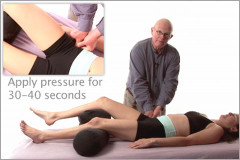
This lesson demonstrates how to assess the rectus femoris for strength, and how to apply orthopedic massage techniques to the muscle.
Adductor magnus
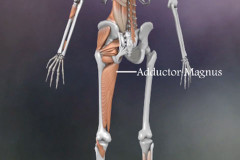
This lesson shows how to perform a functional assessment to the adductor magnus. John speaks about how this muscle can mimic a hamstring tear, and demonstrates how to apply orthopedic massage techniques to the area.
Iliotibial band sydrome
Free Preview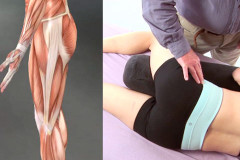
This lesson demonstrates the anatomy of the iliotibial band, common issues, and how to work on the iliotibial band and tensor fascia latae. This will help trigger point referral patterns, and includes cross fiber friction on the lower part of the band, as well as deep muscular work on the muscle. Finally he shows stretches for the band and muscle.
Floor massage for large muscles
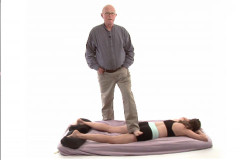
Working on some of the larger leg muscles can be difficult with your hands, but incredibly easy if you use your foot. This lesson shows how to perform deep compression to the leg muscles using your feet. This includes working the hamstrings, lateral hip, adductor magnus and achilles tendon.
Achilles tendon
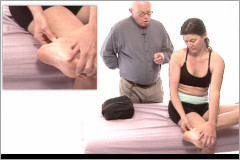
This lesson shows how to work the achilles’ tendon using cross fiber friction. John also shows how to work the gastrocnemius and soleus. Finally he shows how to teach a client to cross fiber friction on themselves as self-care.
Ankle inversion sprain
Free Preview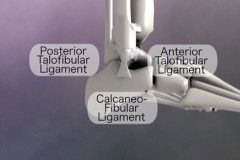
This lesson demonstrates how to work on the anterior talo-fibular ligament using lymphatic drainage and cross fiber friction. Then John shows client self-care and strengthening exercises.
Peroni tendons
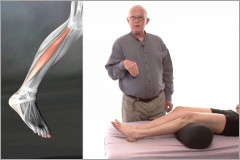
The peroneus longus and brevis muscles can also be affected by a lateral ankle sprain, and in this lesson John demonstrates how to work these muscles and cross fiber fiber friction the tendons.
Tom, Dick and Harry
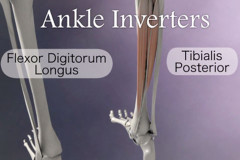
Continuing working on ankle sprain injuries, this lesson demonstrates work on the tibialis posterior, flexor digitorum and flexor hallucis tendons. John then shows self care work that the client can perform at home.
Tennis leg
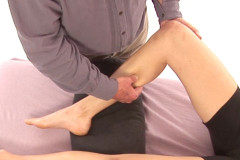
Tennis leg is a small tear in the medial distal head of the gastrocnemius. He then discusses non-weight bearing, non-resistive movement to help the healing process, and final includes self care exercises that the client can perform themselves.
Tibialis anterior
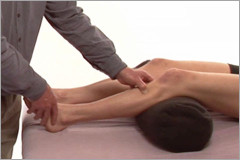
This lesson shows how to work the tibialis anterior, including work for trigger points and self care for the client to release the muscles themselves. He also discusses finding a ‘jump sign’ to discover the location of a trigger point.
Upper trapezius
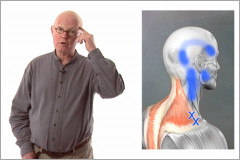
This lesson discusses common trigger points in the upper trapezius, and how to apply orthopedic massage techniques to relieve the trigger point referral patterns.
Suboccipitals
Sternocleidomastoid
Temporalis
Masseter
Lamina groove
Scalenes
Levator scapula
Mid-trapezius and rhomboid
Shoulder Functional Assessment
Shoulder tendons
Subscapularis
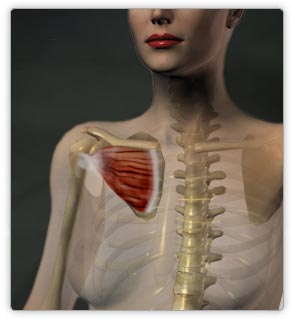



Follow Us!